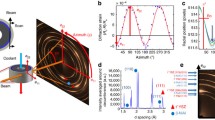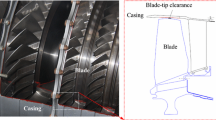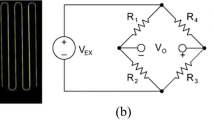Abstract
Gas turbine engines experience “rub” when the rotating blades come in contact with a static abradable coating. This results in extreme strain rates and dynamics inside a high-temperature/high-pressure environment. Current rub models are phenomenological and do not reflect the underlying microstructures, thus limiting their prediction accuracy. In this work, a microstructure-informed, reduced order modeling framework is introduced for simulating abradable coating “rub" behavior. This framework comprises a microscale model constructed based on digitized abradable microstructure and explicitly simulates the mechanical behavior of each constituent phases and their interactions. After calibration and validation with experiment data, the calibrated microscale model is used to generate data across a vast range of applied strain rates and temperature with various load paths. Then, the virtually generated data are used to fit the macroscopic-reduced order model, which enables fast component scale rub simulation without compromising the integrity of the complex material behavior. The proposed effort will address the technical challenge of predicting abradable material behavior during rub through the application of multiscale modeling from microstructure to engines behavior, effectively reducing the development costs and time of new abradable material for better “rub” properties.





Similar content being viewed by others
Data availability
N/A.
References
Almeida P, Gibert C, Thouverez F, Ousty JP (2015) Numerical analysis of bladed disk—casing contact with friction and wear. J Eng Gas Turbines Power. https://doi.org/10.1115/GT2015-43435
Arruda EM, Boyce MC (1993) Evolution of plastic anisotropy in amorphous polymers during finite straining. Int J Plast. https://doi.org/10.1016/0749-6419(93)90034-N
Bakker K (1997) Using the finite element method to compute the influence of complex porosity and inclusion structures on the thermal and electrical conductivity. Int J Heat Mass Transf 40(15):3503–3511. https://doi.org/10.1016/S0017-9310(97)00017-3
Batailly A, Legrand M, Millecamps A, Garcin F, Batailly A, Legrand M, Millecamps A, Numerical-experimental FG, Legrand M (2012) Numerical-experimental comparison in the simulation of rotor/ stator interaction through blade-tip/abradable coating contact. J Eng Gas Turbines Power 134(8):082504
Berthoul B, Batailly A, Stainier L, Legrand M, Cartraud P (2018) Phenomenological modeling of abradable wear in turbomachines. Mech Syst Signal Process 98:770–785. https://doi.org/10.1016/j.ymssp.2017.05.020
Bolot R, Aussavy D, Montavon G (2017) Application of FEM to estimate thermo-mechanical properties of plasma sprayed composite coatings. Coatings 7(7):1–12. https://doi.org/10.3390/coatings7070091
Bolot R, Seichepine JL, Qiao JH, Coddet C (2011) Predicting the thermal conductivity of AlSi/polyester abradable coatings: effects of the numerical method. J Therm Spray Technol 20(1–2):39–47. https://doi.org/10.1007/s11666-010-9592-y
Cao D (2023) Enhanced buckling strength of the thin-walled continuous carbon fiber–reinforced thermoplastic composite through dual coaxial nozzles material extrusion process. Int J Adv Manuf Technol 128:3–4. https://doi.org/10.1007/s00170-023-12014-8
Cao D (2023) Strengthening the interphase of thermoplastic sandwich composites by interleaving carbon nanotube yarns. Mater Today Commun. https://doi.org/10.1016/j.mtcomm.2023.106655
Cao D, Bouzolin D, Lu H, Griffith DT (2023) Bending and shear improvements in 3D-printed core sandwich composites through modification of resin uptake in the skin/core interphase region. Comp Part B: Eng. https://doi.org/10.1016/j.compositesb.2023.110912
Cheng J, Gussev M, Allen J, Hu X, Moustafa AR, Splitter DA, Shyam A (2020) Deformation and failure of PrintCast A356/316 L composites: digital image correlation and finite element modeling. Mater Des 195:109061. https://doi.org/10.1016/j.matdes.2020.109061
Cheng J, Hu X, Lancaster D, Sun X, Joost W (2022) Modeling deformation and failure in AlSi-polyester abradable sealcoating material using microstructure-based finite element simulation. Mater Design. https://doi.org/10.1016/j.matdes.2022.110791
Duramou Y, Bolot R, Seichepine JL, Danlos Y, Bertrand P, Montavon G, Selezneff S (2014) Relationships between microstructural and mechanical properties of plasma sprayed AlSi-polyester composite coatings: application to abradable materials. Key Eng Mater. https://doi.org/10.4028/www.scientific.net/KEM.606.155
Faraoun HI, Seichepine JL, Coddet C, Aourag H, Zwick J, Hopkins N, Sporer D, Hertter M (2006) Modelling route for abradable coatings. Surf Coat Technology 200:22–23. https://doi.org/10.1016/j.surfcoat.2005.11.105
Hesebeck O (2015) Consideration of the restriction of lateral contraction in the elastic behaviour of cohesive zone models. Int J Adhes Adhes 62:165–171. https://doi.org/10.1016/j.ijadhadh.2015.07.003
Jadhav AD, Padture NP, Jordan EH, Gell M, Miranzo P, Fuller ER (2006) Low-thermal-conductivity plasma-sprayed thermal barrier coatings with engineered microstructures. Acta Mater 54(12):3343–3349. https://doi.org/10.1016/j.actamat.2006.03.024
Kotzé JP, Von Backström TW, Erens PJ (2013) High temperature thermal energy storage utilizing metallic phase change materials and metallic heat transfer fluids. J Solar Energy Eng Trans ASME. https://doi.org/10.1115/1.4023485
Kulkarni A, Wang Z, Nakamura T, Sampath S, Goland A, Herman H, Allen J, Ilavsky J, Long G, Frahm J, Steinbrech RW (2003) Comprehensive microstructural characterization and predictive property modeling of plasma-sprayed zirconia coatings. Acta Mater 51(9):2457–2475. https://doi.org/10.1016/S1359-6454(03)00030-2
Legrand M, Pierre C (2009) Detc 2009–87669 numerical investigation of abradable coating wear through. Eng Conf 48982:907–916
Lye R, Bennett C, Rouse J, Zumpano G (2022) An inverse analysis method for determining abradable constitutive properties. Mater Today Commun 33:104571. https://doi.org/10.1016/j.mtcomm.2022.104571
Michlik P, Berndt C (2006) Image-based extended finite element modeling of thermal barrier coatings. Surf Coat Technol 201(6):2369–2380. https://doi.org/10.1016/j.surfcoat.2006.04.003
Nyssen F, Batailly A (2019) Thermo-mechanical modeling of abradable coating wear in aircraft engines. J Eng Gas Turbines Power 141(2):1–11. https://doi.org/10.1115/1.4041647
Olgac N, Zalluhoglu U, Kammer AS (2014) On blade/casing rub problems in turbomachinery: an efficient delayed differential equation approach. J Sound Vib 333(24):6662–6675. https://doi.org/10.1016/j.jsv.2014.06.038
Pellegrino A, Jesus PMM, Dragnevski K, Zumpano G, Petrinic N (2018) Temperature and strain rate dependent mechanical response of METCO 601 aluminium-polyester abradable seal coating. EPJ Web Conf 183:04012. https://doi.org/10.1051/epjconf/201818304012
Ribesse A, Favache A, Lemoine G, Bailly C, Jacques P, Pardoen T (2014) Multiscale mechanical and tribological characterization of alsi abradable material. In: 7th international conference on fracture of polymers, composites and adhesives
Rice JR, Tracey DM (1971) And concepts that can provide the stiffness and strength needed to. Primary design function, but that will efficiently and progressively with fracture during crash loading. 678(January)
Richeton J, Ahzi S, Vecchio KS, Jiang FC, Makradi A (2007) Modeling and validation of the large deformation inelastic response of amorphous polymers over a wide range of temperatures and strain rates. Int J Solids Struct 44(24):7938–7954. https://doi.org/10.1016/j.ijsolstr.2007.05.018
Richeton J, Schlatter G, Vecchio KS, Rémond Y, Ahzi S (2005) A unified model for stiffness modulus of amorphous polymers across transition temperatures and strain rates. Polymer. https://doi.org/10.1016/j.polymer.2005.06.103
Salvat N, Batailly A, Legrand M (2013) Modeling of abradable coating removal in aircraft engines through delay differential equations. J Eng Gas Turbines Power 135(10):102102
Skiba S, Chevrier B, Faure L, Philippon S (2021) Thermoelastoviscoplastic bilinear compressive constitutive law of an AlSi-PE abradable material based on experimental investigations. J Dyn Behav Mater 7(3):499–508. https://doi.org/10.1007/s40870-021-00294-8
Skiba S, Faure L, Philippon S, Papasidero J (2020) Experimental investigation of the mechanical behavior of an AlSi-pe abradable coating at high strain rates for a large range of temperatures. J Dyn Behav Mater 6(2):213–223. https://doi.org/10.1007/s40870-020-00242-y
Wang Z, Kulkarni A, Deshpande S, Nakamura T, Herman H (2003) Effects of pores and interfaces on effective properties of plasma sprayed zirconia coatings. Acta Mater 51(18):5319–5334. https://doi.org/10.1016/S1359-6454(03)00390-2
Williams RJ (2011) Simulation of blade casing interaction phenomena in gas turbines resulting from heavy tip rubs using an implicit time marching method. In Turbo Expo: Power Land Sea Air 54662:1007–1016
Acknowledgements
This research was sponsored by the Oak Ridge National Laboratory (ORNL). ORNL is managed by UT-Battelle, LLC for the U.S. Department of Energy under Contract DE-AC05 00OR22725. This work was funded by the HPC4materials program supported by U.S. Department of Energy Office of Fossil Energy in collaboration with Raytheon Technologies Corporation—Pratt & Whitney Division. Computing support by the Compute and Data Environment for Science (CADES) at Oak Ridge National Laboratory is gratefully acknowledged.
Author information
Authors and Affiliations
Contributions
JC was contributed by writing—original draft, investigation, and formal analysis; XH was respnsible for writing—review and editing, investigation, supervision, funding acquisition, and project administration; WJ was performed by writing—review and editing, investigation, supervision, funding acquisition, project administration, and validation; and XS was involved in writing—review and editing, conceptualization, supervision, and funding acquisition.
Corresponding author
Ethics declarations
Conflict of interest
The authors certify that they have NO affiliations with or involvement in any organization or entity with any financial interest (such as honoraria; educational grants; participation in speakers’ bureaus; membership, employment, consultancies, stock ownership, or other equity interest; and expert testimony or patent-licensing arrangements), or non-financial interest (such as personal or professional relationships, affiliations, knowledge, or beliefs) in the subject matter or materials discussed in this manuscript.
Ethical approval
There are no experiments carried out in this work that involves human tissues.
Additional information
Handling Editor: M. Grant Norton.
Publisher's Note
Springer Nature remains neutral with regard to jurisdictional claims in published maps and institutional affiliations.
Rights and permissions
Springer Nature or its licensor (e.g. a society or other partner) holds exclusive rights to this article under a publishing agreement with the author(s) or other rightsholder(s); author self-archiving of the accepted manuscript version of this article is solely governed by the terms of such publishing agreement and applicable law.
About this article
Cite this article
Cheng, J., Hu, X., Joost, W. et al. Micro–macro finite element modeling method for rub response in abradable coating materials. J Mater Sci 59, 4934–4947 (2024). https://doi.org/10.1007/s10853-023-09327-0
Received:
Accepted:
Published:
Issue Date:
DOI: https://doi.org/10.1007/s10853-023-09327-0




